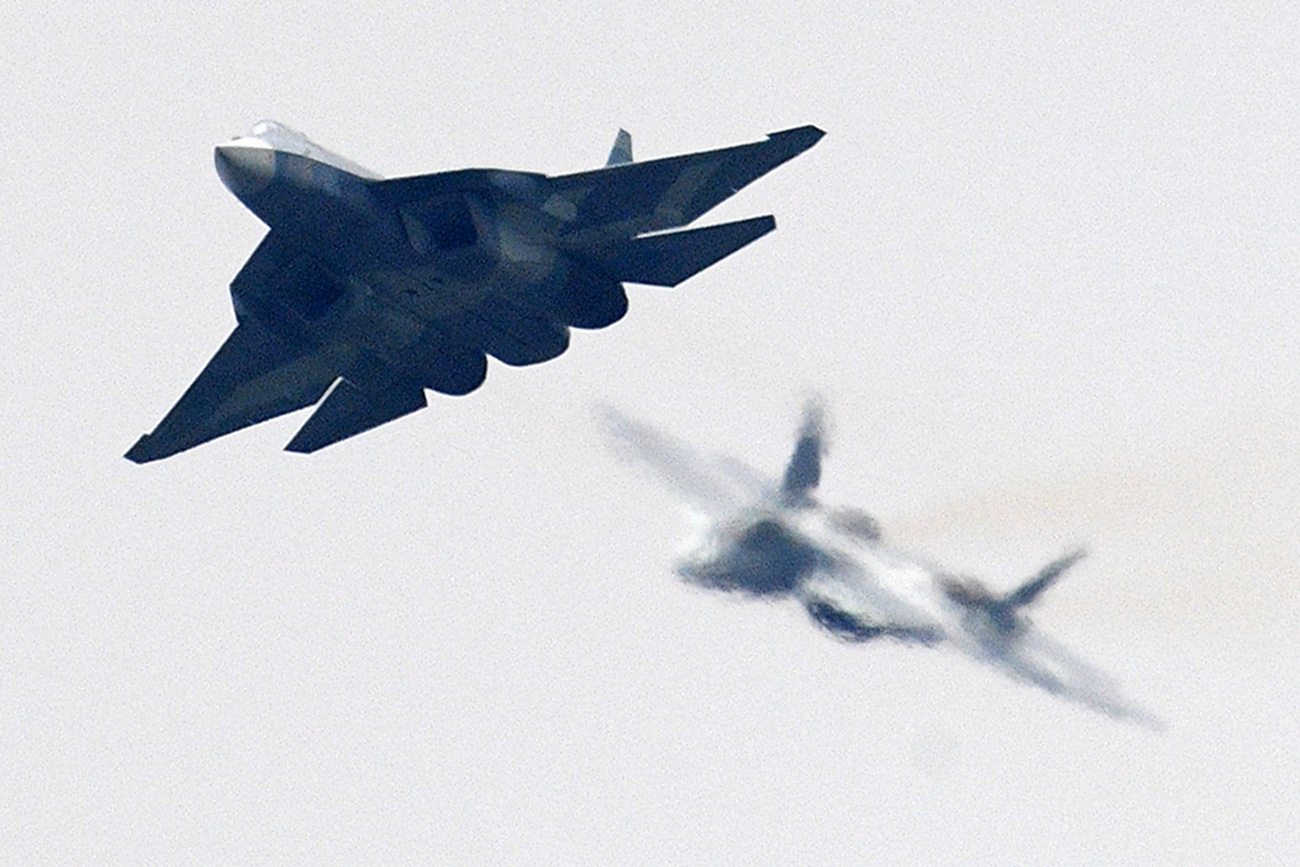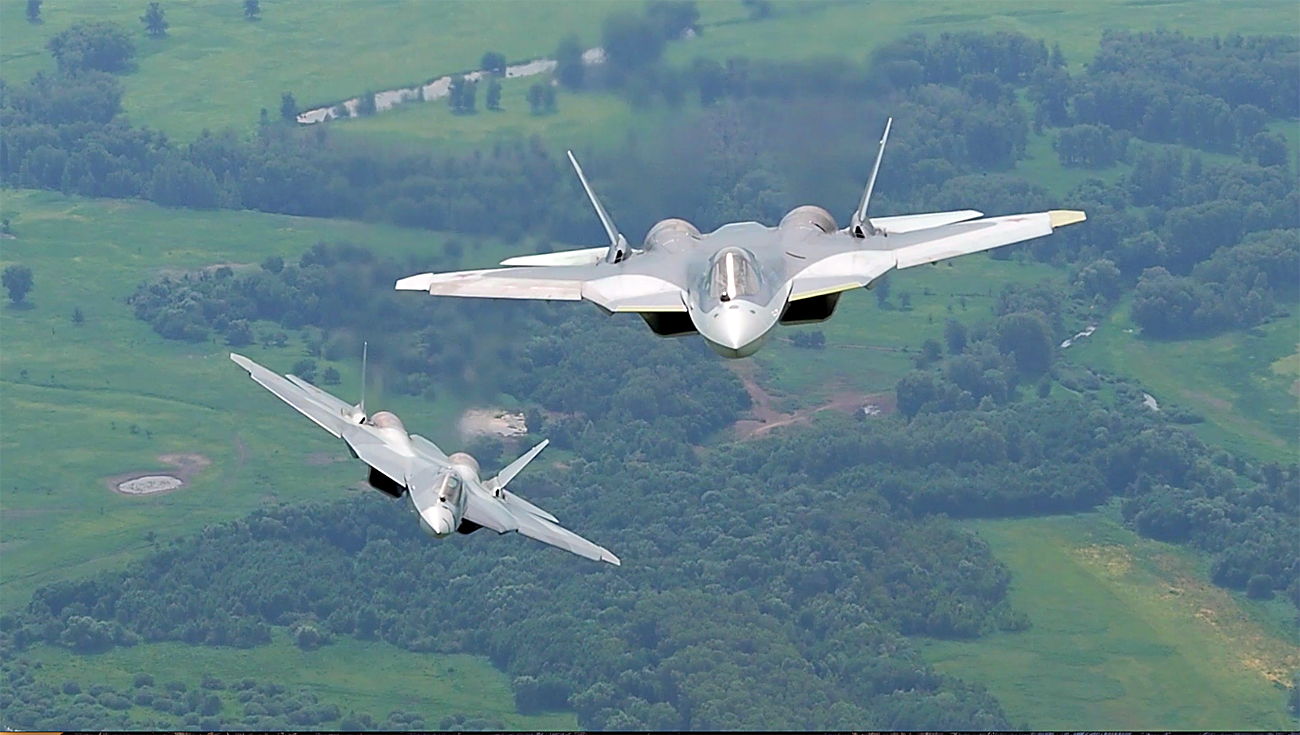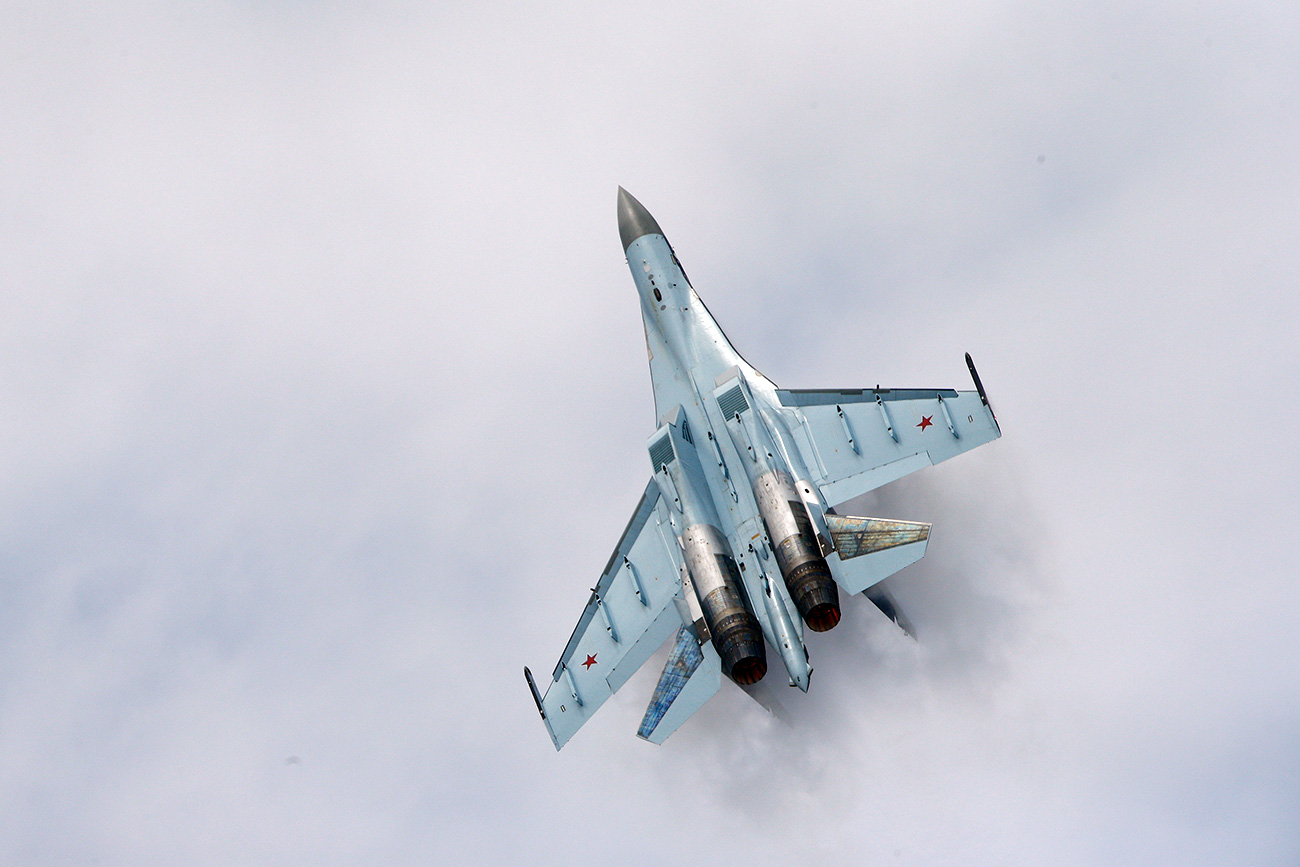Russia’s fifth-generation fighter jet gets a new ‘heart’ and a new name

T-50 at the International Aviation and Space Salon MAKS-2017 in Zhukovsky. Source: Evgeny Biyatov/RIA Novosti
The prototype of the Russian-made fighter jet known as the PAK FA (T-50) has now been coined the Su-57, after its new fuselage passed all tests. The advanced aircraft still needs to undergo both weapons and engine testing before final production can begin.
The ninth prototype of the T-50 has been equipped with the Izdelie-30, fifth-generation engine, which will be tested at the end of the year.
Compared to the Izdelie-117, the engine is a new development and has already been installed in the latest Su-57. The Izdelie-117 is a modernized version of the AI-31 engine - the “heart” of the original Su-27.
What will the new engine bring to the table?
Each new engine will enable the Su-57 to maintain cruising speed during supersonic flight, meaning the jet will be able to fly consistently at 2,000 km/h (1,200 mph).
The composite materials used to make the new fuselage will also improve the fighter’s stealth abilities, making it harder to detect on enemy radars.
However, the first eight Su-57s rolled off the production line will “most likely have ‘the old metal hearts’ ” - Viktor Murakhovsky, editor-in-chief of Arsenal Otechestva magazine, told RBTH.
It won’t be until 2019 that Russia’s Air Force will be beefed up with Su-57s fully loaded with the new technology, including the Izdelie-30. The engine will need to be put through a long string of tests and will be mounted on the Su-57 aircraft no earlier than 2019 or 2020', Murakhovsky added.
Second stage of testing
Unlike previous prototypes, the ninth prototype of the Su-57 is equipped with the full set of radio-electronic equipment that will be installed on the completed version of the jet. This will allow the aircraft to evade all modern air defense systems, Murakhovksy explained.
The first phase of tests for the Su-57 demonstrated impressive control when traveling at both subsonic and supersonic speeds, as well as at various altitudes.
Mass production will only start after the second stage of the tests is completed (weapons testing). According to the President of the United Aircraft Corporation - Yury Slyusar - the Russian Air Force will receive the first 12 Su-57 aircrafts in 2019.
The jet’s competition
The main competitors of the Su-57 will be the U.S.-made F-22 Raptor and F-35 Lightning.
Vadim Kozyulin, a professor from Russia’s Academy of Military Science, told RBTH that the Su-57 will be considerably cheaper than its American counterparts.
The Russian fifth-generation fighter jet will enter mass production much later than the F-22 Raptor, which has already been in service with the U.S. Air Force for six years. Kozyulin believes this delay is only a good thing, as it gives the Russian military more time to evaluate other fighter jets before finalizing its own aircraft.
Read more:
Is this the end for the legendary Soviet Antonov aircraft?>>>
Russian army to be beefed up with anti-chopper mines>>>
Dog fights, car races and presidential ice cream: Top moments at MAKS 2017>>>
8 reasons to quit your job and become a test pilot>>>
If using any of Russia Beyond's content, partly or in full, always provide an active hyperlink to the original material.
Subscribe
to our newsletter!
Get the week's best stories straight to your inbox

